Photos: Scott Dudelson/Getty Images for Coachella, Dana Jacobs/Getty Images, Justin Shin/Getty Images, Gene Wang/Getty Images
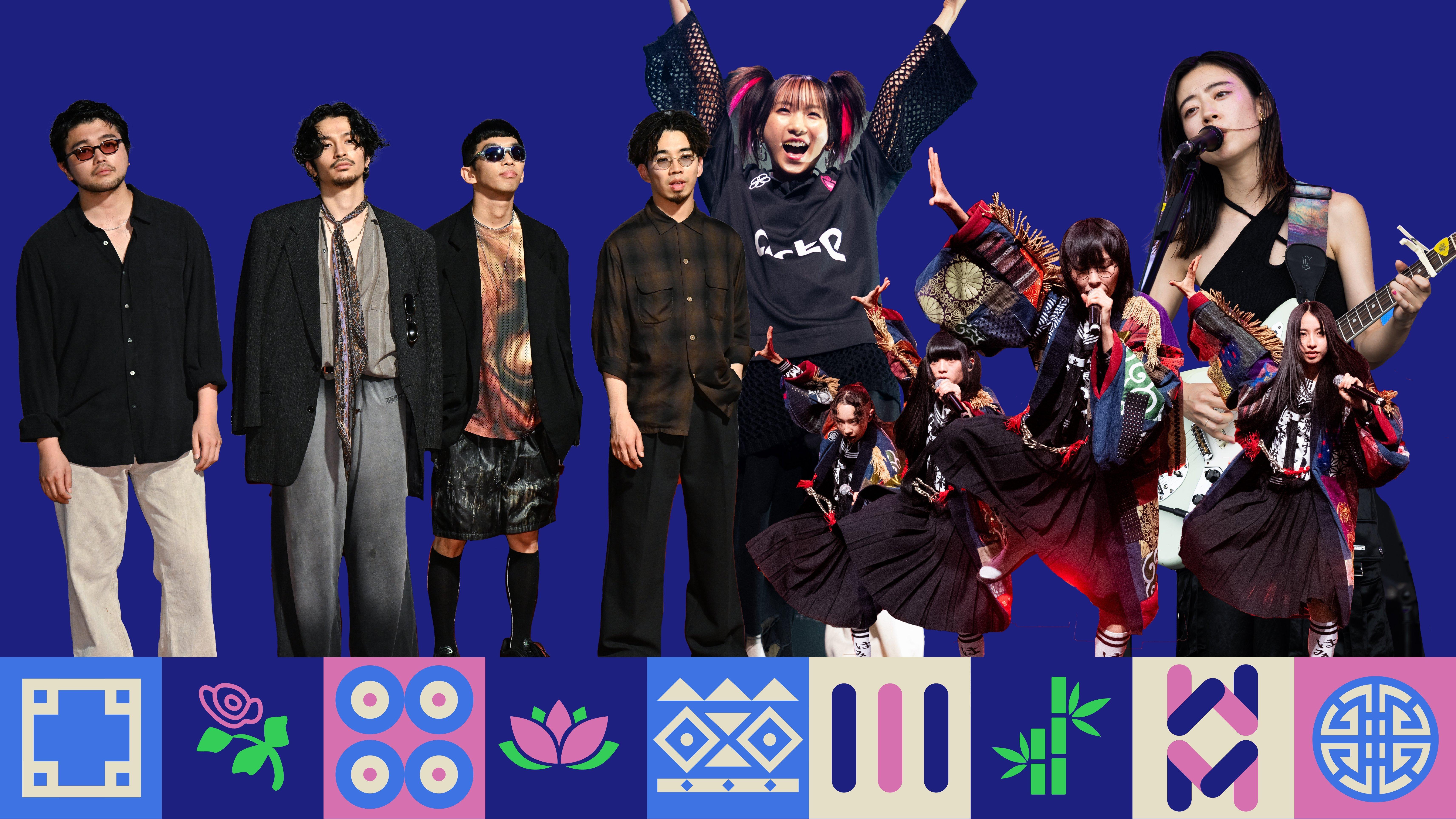
list
10 Neo J-Pop Artists Breaking The Mold In 2024: Fujii Kaze, Kenshi Yonezu & Others
Japan’s domestic pop market has incredible depth and growing Western interest. From Vocaloid acts to anime-centric productions and a plethora of genre-bending releases, the country's musicians and solo artists are breaking ground and making noise.
At this year’s Coachella, Japan’s music industry made a statement: out with the old, in with the new. Where previous years hosted legacy acts like Utada Hikaru and Kyary Pamyu Pamyu, up-and-coming hitmakers YOASOBI and cult favorites Atarashii Gakkou! played to sizable crowds in 2024. They represent just the tip of the iceberg for Japanese musicians touring stateside: J-R&B star Fujii Kaze will tour the country this month, and numerous acts have seen exposure abroad thanks to anime soundtrack work and streaming playlists such as Spotify’s Gatcha Pop.
Anime, by far the country’s biggest cultural export, is a major factor in Japan’s music industry, with songs composed for animated films, TV, and streaming projects — and to a lesser extent video games — making up a growing number of the country’s most dominant pop hits. "Anison," or anime songs, have become extremely prestigious commissions for the country’s pop musicians, especially for younger artists who have seen anime gain traction both in Japan and internationally.
That younger generation is now taking control of the charts, and making inroads into international markets by leaning into what makes their music and culture unique. For musicians like Kenshi Yonezu, vocal synthesizer software Vocaloid allowed them to develop their own musical voice on their own terms. The most famous Vocaloid artist, Hatsune Miku, also played Coachella this year as a video-projected anime avatar. There’s also remarkable freedom to play with genre in J-pop. Acts freely swap between sounds —from alternative rock to funky city pop, or R&B to electro-pop — in the span of a few songs.
These factors have made Japan’s domestic pop market one of the most interesting to watch in the world. It’s gotten to the point where top English-language artists aren’t seeing the success they used to in the country, largely because the Japanese public has shifted its attention toward Korean and domestic artists. For Westerners, Japan can seem like another world, and this is especially true for its music scene.
To bridge the gap, GRAMMY.com has created a primer to 10 of Japan’s most interesting new acts. Who knows, you might just see them stateside soon.
Ado
Japan isn’t exactly a happy country. Social pressure is high, the economy has been stagnant for years even before its current monetary crisis and its brutal work culture is not exactly the envy of the world. Young people often feel as though they have nothing to look forward to but misery, so when someone comes along and says it’s okay to tell the adults in your life to f— off, it resonates.
This is essentially how 22-year-old singer Ado (born 2002) became the voice of Gen Z. Late in 2020 amid the stresses of the COVID-19 pandemic, she burst onto the J-pop scene with "Useewa," a rock-centric track composed by Vocaloid producer Syudou whose title translates, roughly, to "Shut the f— up." Detailing the angst of having to grin and bear the conformity of adulthood and the satisfaction of rejecting it, the song clearly struck a chord with young people in Japan. The song’s brash lyrics also sparked a moral panic from parents and the media over its anti-conformist message.
Ado’s charismatic, fiery vocal delivery, coupled with a nasty anime visual, really sells the whole package, making it a rage-filled counterpart to YOASOBI’s similarly disaffected "Yoru ni Kakeru."
"Usseewa" topped the Billboard Japan Hot 100, the Oricon Digital Singles and Streaming charts, and the Spotify Viral 50 Japan. The video reached 100 million views on YouTube within 150 days of release. Ado has since earned more hits, furthering her wild persona with the even louder and wilder "Show." She also earned a starring role as a singer in One Piece Film: Red, the most recent theatrical installment of the biggest manga franchise in the world.
Atarashii Gakko!
There’s a saying in Japan about the risks of refusing to conform to society’s expectations: "The nail that sticks out gets hammered down." When it comes to finding success on the international music market, however, the opposite seems to be true. The world loves Japan when it’s at its zaniest and most distinctive, and artists that lean into this are often able to build a following abroad.
Case in point: A rapping girl group wearing vintage-inspired sailor-suit school uniforms called Atarashii Gakko! (translation: New School). The group just played Coachella and, prior, performed on "Jimmy Kimmel Live." To be sure, a lot of the foursome’s appeal is in the visual department. The group’s wild, Beastie Boys-esque video for "Tokyo Calling" pairs their sukeban girl gang-style outfits with a plethora of retro visual references: kaiju films like Godzilla, Super Sentai, even Bollywood-style dance. Musically, they’re just as mixed up, having taken on ‘80s city pop in "Otonablue" as well as adding to Japan’s legacy of unique hip-hop on "NAI NAI NAI."
The group’s ethos since forming in 2015 has been to shine a new path for Japan’s youth by embracing individuality and nonconformity, and it’s paid dividends so far. Their new album, AG! Calling, is set for release June 7.
Creepy Nuts
There’s a lot of bizarre, potentially conflicting elements in Creepy Nuts’ hit song "Bling-Bang-Bang-Born." There’s the sound-effect-bubble title, the anarchic rapping of vocalist R-Shitei, and producer DJ Matsunaga’s use of a Jersey Club beat (a trend with forward-thinking East Asian pop acts). There’s also the fact that it was composed for an anime about…wizards with muscles?
In any case, the theme song for the TV anime "Mashle: Magic and Muscles" has pulled some chart magic of its own, topping the Billboard Japan Hot 100 for eight weeks straight earlier this year, largely thanks to the viral "BBBB dance" challenge. The duo have also taken the song worldwide, reaching No. 8 on Billboard U.S.’s Global 200 and performing the song on Global Spin. If you want to find the biggest J-Pop hit of this exact moment, look no further.
Fujii Kaze
Raised in small-town Okayama prefecture in the western reaches of Japan, Fujii Kaze is being positioned as the next big artist to emerge from the country. He toured Asia in 2023 and will come to America this May; he also launched the Japanese version of Tiny Desk Concerts earlier this year. He’s also been working with international talent, such as Kendrick Lamar and 21 Savage producer DJ Dahi on the piano-driven hip-hop track "Workin’ Hard."
The video for "Matsuri," in which Fujii (the artist lists his surname first) traipses around a Japanese garden and parties with foreigners at a traditional mansion, feels almost like a tourist advertisement for the country, projecting an image of refined, effortless Japanese cool. Recent song "Hana," produced by Charli XCX and Utada Hikaru collaborator A. G. Cook, feels even more like a play for the international market with a ‘70s California soft rock backing track and a visual that puts Fujii on a journey through the desert.
Herein lies the secret to Fujii Kaze’s appeal: he’s hot and cool at the same time. His success is predicated not just on good looks and buttery croon, but on a smooth, easygoing persona that feels native and international at the same time. "Matsuri," with its chill yet glamorous R&B production and can’t-be-bothered lyrics ("there’s no reason to suffer / no need to be disappointed / I really couldn’t care less") exemplifies his laid-back mentality. He’s also, notably, shunned the anime market, preferring to put his songs in basketball promos and telecoms commercials – anime is cool enough for Megan Thee Stallion but not for Fujii, it seems.
Hitsujibungaku
Just as grunge reignited America’s love of rock music in the ‘90s, Japan also embraced guitar-oriented, pop-rock in the same decade thanks to bands like B’z, Number Girl, Southern All-Stars, Asian Kung-Fu Generation, and Visual Kei groups like L’Arc-en-Ciel and X Japan. As the U.S. began to embrace hip-hop and dance-pop in the 2000s, rock and metal persisted in the Japanese mainstream. New bands continue to perform at "live house" venues in hip areas like Tokyo’s Shimokitazawa neighborhood, while groups playing niche styles like math rock, shoegaze, and metalcore have found support. CHAI, tricot, Alexandros, Otoboke Beaver, and Official Hige Dandism are just a few bands that have emerged from this milieu in recent years to success at home and abroad.
Tokyo-based trio Hitsujibungaku offers a good starting point of where Japan’s rock scene is going. The majority-female group found success on the anime song circuit last year, delivering the end credits track for mega-popular TV anime "Jujutsu Kaisen." "More than words" which became the lead single for their recent album 12 hugs like butterflies, immediately stuck out for its shuffling, nostalgic melody, and evocative, fuzzy layering of guitar tone influenced by shoegaze.
Kenshi Yonezu
More than most mega-successful J-pop artists, Kenshi Yonezu owes his success to the Vocaloid and internet music communities in which he forged his artistry. Raised in rural Tokushima, he began his career as a teenager in the late 2000s, uploading music to the video site Nico Nico Douga under the name Hachi, and soon found his most successful tracks were the ones that used Vocaloids like Hatsune Miku. Like many artists in the digital age, Yonezu’s early work was entirely DIY, as thanks to Vocaloid he was able to produce, write, and even design artwork for his music all on his own.
Eventually, Yonezu signed to a major label and began to split time between his Vocaloid tracks as Hachi and music made under his own name. His album Bootleg won Album Of THe Year at the Japan Record Awards in 2018, and he became known for tender, uptempo ballads like "Uchiage Hanabi" and "Lemon" (the latter of which still reigns as the most-viewed video by a Japanese musician on YouTube with over 800 million views).
Two high profile anime commissions have driven Yonezu’s star beyond Japan. In 2022, he produced the opening theme for the highly-anticipated adaptation of Tatsuki Fujimoto’s acclaimed manga Chainsaw Man. "Kick Back" departed from Yonezu’s biggest hits by leaning into the show’s action premise with drum and bass beats and an aggressive guitar melody. Buoyed by the anime’s success, "Kick Back" topped the Oricon and Billboard Japan singles charts and even charted in the U.K., Canada, and the U.S., where it became the first Japanese-language song to be certified gold by the RIAA.
Then in 2023, he produced and sang "Spinning Globe," the end credits theme for Hayao Miyazaki’s first film in a decade, The Boy and the Heron. It was the first time the anime auteur, who usually uses older pop music or score from usual composer Joe Hisaishi, had chosen a contemporary pop artist to write for him.
King Gnu
King Gnu aren’t afraid to mix it up. They gained acclaim in Japan by pursuing a pop rock sound that’s one part city pop, one part hip-hop. Tracks like "Hakujutsu" and "Kasa" pair sick riffs and boogie basslines with turntable scratching and delicate, yet powerful vocals from Daiki Tsuneta and Satoru Iguchi.
Last year they scored a major hit with "Specialz," which was used as an opening theme for popular anime "Jujutsu Kaisen." Setting the mood for the show’s bleak second season with metallic techno drums and brawny guitar riffs, the menacing song peaked at No. 2 on the Billboard Japan Hot 100 and currently has over 166 million Spotify streams. Tsuneta also leads the collective millennium parade, who lean toward electronic music and scored a hit with "U," from the Mamoru Hosoda musical anime BELLE.
MAISONdes
Conceptual projects are much more common in the Japanese pop landscape than one might expect. Case in point: MAISONdes. While not a band or a collective, MAISONdes is an imaginary apartment building where lonely hearts find solace in song. The virtual building is accessible through a website, and each song produced for the project is assigned a room number and created by a randomly-paired team of producers and vocalists that changes with each track. Participants have included chart star Aimer and VTubers such as KAF and Hoshimachi Suisei.
Too complicated? Too weird? At least the music is good, focused on high-energy electro pop reminiscent of Kyary Pamyu Pamyu, idol pop, and the Vocaloid, anisong, and netlabel acts of recent decades. As such, the most high-profile MAISONdes tracks have been those produced for anime and promotional campaigns. They’ve done all the opening and ending themes for the recent TV anime reboot of classic comedy manga "Urusei Yatsura," and their most recent track, "Popcorn" was a collab with Sanrio celebrating the 50th anniversary of Hello Kitty, one of the original kawaii culture icons. The hyperactive song gained a million views on YouTube within three days of being posted.
Vaundy
City pop — the ‘70s and ‘80s musical movement that blended American funk and AOR with disco and synthpop — looms large in the J-pop landscape. Although its revival has somewhat peaked following the pandemic, that hasn’t stopped guys like Vaundy from channeling the sound into their own music.
His breakout hit "Tokyo Flash" paired the grooves of the city pop era with a more down-to-earth arrangement with simpler production. Further attempts to modernize the sound have also found success: "Todome no Ichigeki," written for the popular anime "Spy x Family," featured a grand, orchestral instrumental and a guest verse from rapper Cory Wong. With romantic lyrics reminiscent of City Pop king Tatsuro Yamashita, it’s a true return to the retro style.
Of course, like most J-pop musicians, Vaundy isn’t a stylistic purist. He’s also applied his confident vocal style to several brisk rock tracks, resulting in chart success. His heavy metal jam for the Chainsaw Man TV anime soundtrack, "CHAINSAW BLOOD," peaked at 13 on the Billboard Japan Hot 100, while the poppier "Kaijuu no Hana Uta" went to No. 2 after he performed the song on the "2022 Kohaku Uta Gassen" New Year’s Eve show.
YOASOBI
Inarguably the focal point of contemporary J-pop, no other act has defined the current era in Japan more than YOASOBI. The duo of Ayase and Ikura burst onto the scene in 2019 with the song "Yoru ni Kakeru," based on a short story posted on the site Monogatary. Pairing an upbeat instrumental with bleak, literary lyrics about death and suicide, it’s the most unlikely of pop hits. Released in late 2019, just as the COVID-19 pandemic began to grip Japan a few months before the rest of the world. "Yoru ni Kakeru" became a massive, award-winning smash. Billboard Japan named it the first song in its chart history to pass 1 billion streams, and Oricon named it the most-streamed song of the Reiwa era just last month.
Read more: From Tokyo To Coachella: YOASOBI's Journey To Validate J-Pop And Vocaloid As Art Forms
Since then the band have become major hitmakers and fixtures of the anison production line, writing theme tracks for hit anime like "Mobile Suit Gundam: The Witch from Mercury" and "Frieren: Journey’s End." They scored another era-defining hit with "Idol," their opening song for the controversial 2023 showbiz satire "Oshi no Ko." Responding to the anime’s twisted tale of a mysterious J-pop idol with dark secrets, the duo paired a bombastic instrumental with lyrics that perfectly capture the cardinal rule of stardom: tell all and reveal nothing.
The song became such a cultural phenomenon in Japan that YOASOBI performed it at last year’s "Kohaku Uta Gassen" New Year’s TV special flanked by dozens of J-Pop and K-Pop idols, including members of NewJeans, LE SSERAFIM, and Nogizaka46.
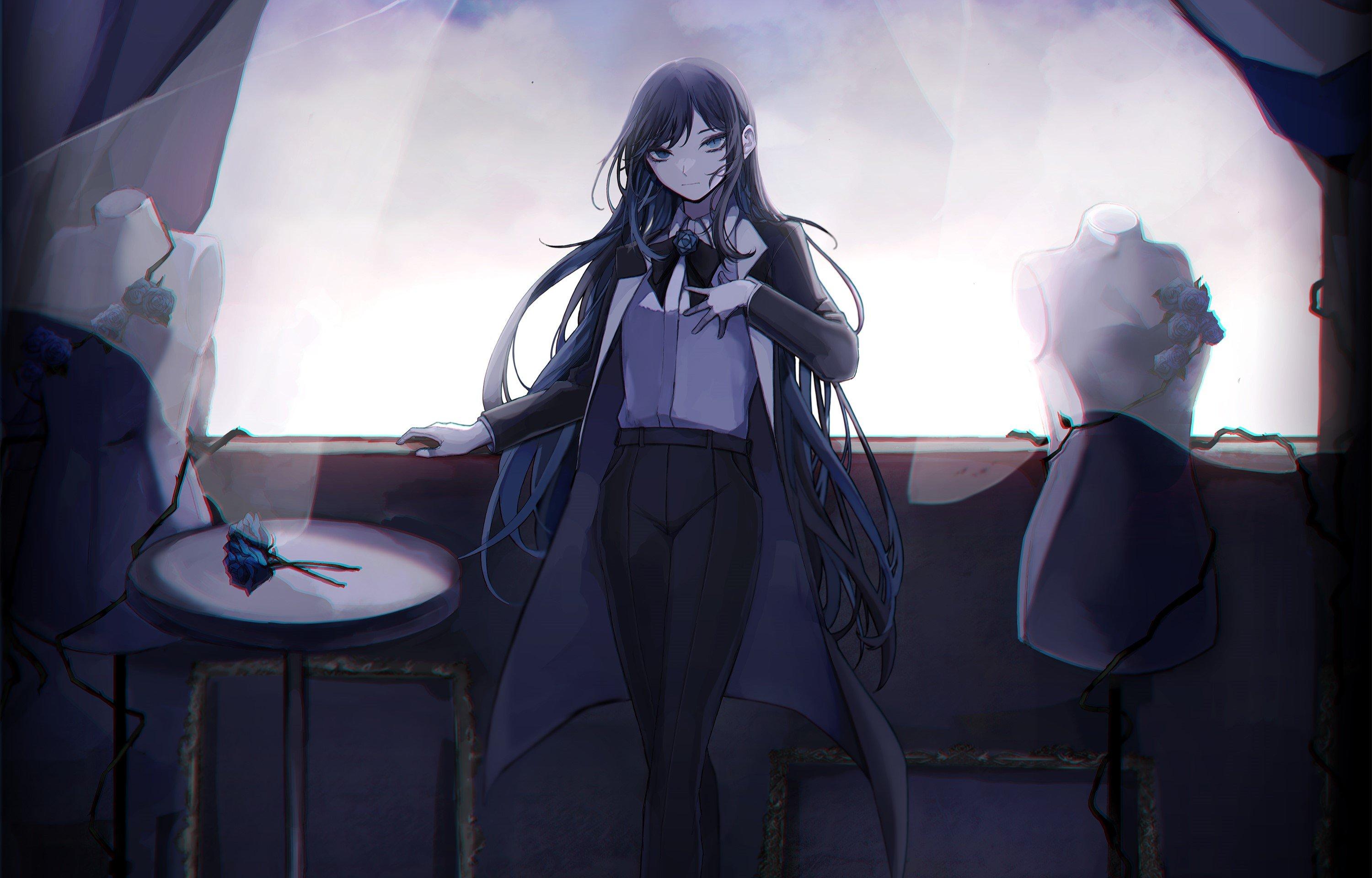
Photo: Universal Music/Geffen Records
list
Get To Know Ado, The J-Pop Vocaloid Star Condemning Conformity
No one has ever seen her face or knows her true identity, but Japanese pop artist Ado has made waves for her honest, emotive songs. Before diving into her new album, 'Zanmu,' here's everything to know about the elusive singer.
"Understanding the latest trends, checking the stock market on the way to work, joining a company with pure spirit/ these are the obvious rules for us workers. Huh?/ Shut the f— up," J-pop star Ado screams on "Usseewa."
Released in 2020 at the height of the pandemic, the blatant rejection of societal expectations and conformity on "Usseewa" felt like a cathartic scream breaking out of a body crammed with frustrations. Ado, then just 18 years old, pulled no punches on the track, diving straight into spitfire delivery set against an equally powerful, urgent electronic beat. Her voice swung between controlled rage, disparaging sneers, and periodic screams betraying her frustrations with the adult world.
No one had ever seen Ado’s face at this point — no one still has — but listeners felt her vitriolic anger. The visceral anguish struck a nerve with a young population breaking under the weight of uncertainty, mental turmoil, and the pressure of compliance. As she told Billboard in 2023, "It was a rebellion against adults and this society, and I really wanted to win."
"Usseewa" reached 100 million plays in 17 weeks (the sixth-fastest song in Japanese history to do do), and Ado became the youngest artist to hit that metric. Eventually, it hit the top spot on the Billboard Japan Hot 100 chart, Oricon Digital Singles Chart, Oricon Streaming Chart, and the Spotify Viral 50 chart in Japan – all without ever having had a physical release. The term "Usseewa"’ was among the winning buzzwords of 2021 in Japan, and there were also calls of banning the song from schools citing its negative effects on children.
The song’s popularity signaled a shift in the Japanese music landscape, which is heavily dominated by physical releases. Additionally, it championed the ethos of Vocaloid subculture. Often used as a blanket term for what has become a genre of its own, Vocaloid originally refers to a synthesizing software which allows users to input lyrics and melodies and create songs. The introduction of platforms like Nico Nico Douga — also known as Niconico — propelled it into becoming a thriving creative playground, with many artists eventually crossing over and becoming mainstays on J-pop charts.
Unlike numerous Vocaloid artists who had given up their monikers or anonymity after transitioning into the mainstream, Ado remained represented by an animated high school girl with a blue rose. That didn’t deter her upward climb; she soon delivered her first full-length album, Kyougen, and provided vocals for the character Uta in the massively successful anime movie One Piece Film Red.
Ado’s recently released album, Zanmu, marks the crucial point in her artistic journey. Here, she reckons with identity, fame, and her dreams from a more mature perspective than ever. As you dive into Zanmu, here is everything you need to know before getting into the elusive Japanese superstar.
Ado’s Roots Are In Vocaloid Culture
While it thrived on the periphery of mainstream J-pop for years, Vocaloid has become a phenomenon shaping contemporary Japanese music, with Billboard Japan launching their Nico Nico Vocaloid Chart in 2022.
Ado — who refers to Niconico as a "childhood home" – was just 5 years old when she first discovered Vocaloid and was immediately taken with virtual popstar Hatsune Miku. There was an "air of mystery" around the music, and Ado wanted to unravel it. "I wanted to understand what was behind that strangeness. I couldn’t understand whether it was anime or a human being, or who made the music," she recalled in an interview with the Guardian in 2024.
She started uploading covers of her songs on the platform, rising in popularity thanks to her covers of BIN and Syudou, the latter of whom later wrote and produced "Usseewa." Despite her mainstream breakthrough, she’s never let go of her utaite (a term typically used for cover artists who got their start on Niconico) roots. As she told NME, "Vocaloid really is who I am. It’s all of me. I would say that Vocaloid’s existence is one and only. It’s so unique. There’s nothing that comes close to it."
Ado Loves Her Anonymity
Despite being a massive star, Ado has gone to great lengths to keep her identity under wraps. Her public identity is an animated character and she assiduously avoids appearing in videos or photos. At a meet-and-greet event, the singer shook hands with fans through an opening in a box. At her live shows, the introverted artist appears as a silhouette against a brightly lit screen. At times, her darkened form is also situated in a cage.
Some fans speculate that the cage is an added layer of protection for identity to dissuade any stray photos or videos of the star. In fact, according to a TV Asahi interview, no one knows she is Ado except for a few close friends: "I haven’t told my classmates or anyone else, except for only my close friends."
Over the years, the singer has also stated that her anonymity is a means to remove background noise and help people focus on the music: "When I perform live, it’s about what can be expressed purely through the songs, the lighting and my silhouette," she told the Guardian in an interview earlier this year.
Ado Doesn't Like Watching Playbacks
The singer has affirmed in multiple interviews that she’s not a fan of watching anything that remotely shows her form or silhouette. "It’s really uncomfortable for me. I really don’t like seeing myself in [any] media form — concerts, photos, video footage. Even if there’s a slight shadow of myself or a flicker, I just want to shut down the computer or turn it around so I don’t have to see it," she told Billboard.
With fame and public appearances becoming such an integral part of her life, Ado admits she's become much better with handling recordings of herself — however vague.
While watching a recording of herself performing "Odo" earlier this year, the singer could be heard screaming and cringing periodically. When asked about it in an interview later on, she confessed: "I am not good at looking at what captures my movements… like photos and videos. But recently, probably because of my improved performance, I have become able to see a little bit of it."
She Hasn't Always Loved Herself, And That's OK
Ado’s anonymity at times protected her from her "personal complexes." As a teenager, the singer feared that she would never be able to do anything substantial. "I was never good at studying or exercising and I felt like I was useless," she said in a 2021 interview: "I developed a pretty big complex about it because I wasn’t confident about anything, I wasn’t an especially popular or interesting person in class, and it all compounded. You could say I was a very, very, very gloomy person."
The anonymous world of utaite was appealing to the budding singer. "Utaite don’t reveal their faces or their real names — people don’t know where they live or what they do — they’re really active on the Internet and lots of people pay attention to their work," Ado said in 2021. "That alone seemed so alluring to me."
Despite experiencing the immense love of her fans first-hand, Ado confessed in a 2022 Billboard interview that how she viewed herself was leagues apart from how her fans revered her.
"I would really love to be able to look at the footage or photos of myself and think it’s all great and really appreciate myself. See myself the way the fans see me. I think that would make everything much more fun, but I’m not quite there yet," she said.
Parts of this internal struggle — particularly the dissonance between Ado the artist and Ado the person — have often bled through in her work. Yet Ado has hinted at long-awaited closure on Zanmu. Ado released a number of handwritten notes on social media, one of which detailed the aftermath of a lengthy emotional struggle and relief thereafter: "I had a dream where I fought against myself. It was more of a struggle or conflict, but I truly fought myself. A version of me that looked like a hero stood before me, and I lost to it. It was just a dream, but it really hurt and was tough. However, I felt a bit lighter in my heart. I want to be helped again."
Some Of Her Early Songs Were Recorded In A Closet
In a 2020 Real Sound interview, the singer revealed that a lot of her early work was recorded inside a closet in her home. "That was the only recording space I had. I'd go in like ‘Guess I'll record’ and slam it shut."
Interestingly, this particular holdover from her utaite days seems to have persisted well beyond her major label debut. In a 2022 NME interview discussing her role in One Piece Film Red, she revealed that her recording sessions often comprise just her and a recording engineer since it helps her relax. "I feel like I’m at home, and I can focus. It’s my own time."
"Dreams" Are A Core Aspect Of Her Artistry
On Zanmu, her second original album, Ado hurls listeners into a phantasmagorical dreamscape of chaos and introspection. Throughout, Ado’s deepest fears and concerns come out to play, juxtaposing the listener's own inner dialogue.
"'Zanmu' is a real word, meaning an unfulfilled dream. A dream that lingers even after waking up. I’ve always liked this word and thought it represented the dreams I’ve fulfilled in my life, as well as the youth that didn’t come true," Ado explained in a press release. But this isn’t the first or only time that the singer has dwelt on dreams — the concept is a cornerstone of her artistry.
In a 2022 stream titled "To Everyone Who Was Born in 2002," where Ado mulled over turning 20, the singer explained that the blue rose on her persona represented dreams coming true. Since they do not exist naturally, blue roses have canonically symbolized impossibility and the unattainable. However, in 2002, scientists created a genetically modified blue rose with the artificial blue pigment Delphinidin. Since then, interpretations of the meaning of a blue rose began to reflect the possibility of the impossible — literally, dreams coming true.
Ado thought it was meant to be: "That message really appealed to me. So I thought: ‘I’ll use this motif’. That’s why I wear the blue rose on my chest, near my heart."
Latest News & Exclusive Videos

2024 Paris Olympics Opening Ceremony: Watch Celine Dion, Lady Gaga, Gojira & More Perform

Ice Spice Is The Drill Queen On 'Y2K!': 5 Takeaways From Her Debut Album

New Music Friday: Listen To New Songs From Halsey, MGK And Jelly Roll, XG & More

Watch Young MC Win Best Rap Performance In 1990

The Red Clay Strays Offer A New Kind Of Religion With 'Made By These Moments'

Photo: Erika Goldring/Getty Images
list
6 Takeaways From Megan Thee Stallion's 'Megan': Snakes, Shots & Self-Assurance
From the serpentine theme to Japanese rhyme schemes, Megan Thee Stallion's third album snatches back her own narrative and isn't afraid to take a bite.
Beware of venom: Megan Thee Stallion is not biting her tongue on her new album, simply titled Megan.
The GRAMMY winner's first full-length release in two years is also the first to drop under her own control. Fans have been ready for this release even before the first single, "Cobra," came out in November. The second single, "Hiss," followed in January and brought the star her first No. 1 hit on the Billboard’s Hot 100 and Global 200 charts. These songs, as well as the third single, "BOA," foreshadowed a certain slithery theme that helped shape the album.
Megan was released on June 28 and features guest stars such as GloRilla, Victoria Monét, Big K.R.I.T. and Kyle Richh as well as her longtime ace producers like Juicy J (who made "Hot Girl Summer" among other calling cards) and LilJuMadeDaBeat, who produced Stallion anthems like "Big Ole Freak," "Body" and "Thot S—."
Here’s what we learned from listening and vibing to the latest work by three-time GRAMMY winner Megan Thee Stallion.
A Theme Snakes Through Megan
As could have easily been predicted from the first three singles "Cobra," "Hiss" and "BOA," and now the album track "Rattle," there is a hint of a snake theme that wends its way through the album from beginning ("Hiss") to end ("Cobra").
In several songs, she denounces all the snake behavior that she has encountered from former lovers, friends, and haters who support those who have caused actual harm to her. In the music video for "Cobra," Megan literally sheds her old skin to reveal a shining new layer.
Megan Is Calling The Shots This Time
"I feel like Biggie, 'Who Shot Ya?’/But everybody know who shot me, bitch/ So now, let’s stop speaking on the topic," she rapped in "Who Me (feat. Pooh Shiesty)" off her 2022 album Traumazine. MTS was referencing the July 2020 incident in which rapper Tory Lanez shot her in the foot, and was subsequently charged with assault with a semiautomatic firearm and carrying a loaded, unregistered firearm in a vehicle.
Turns out, she wasn’t done referencing the topic. Now, she’s one taking the shots. MTS takes aim at less-talented women rappers on "Figueroa" (named for a Los Angeles street known for prostitution), and at Lanez on "Rattle," when she suggests that his male supporters should schedule a conjugal visit with him in prison. (Lanez is currently serving a 10-year sentence while simultaneously going through a divorce with wife Raina Chassagne.)
More Megan Thee Stallion News & Videos
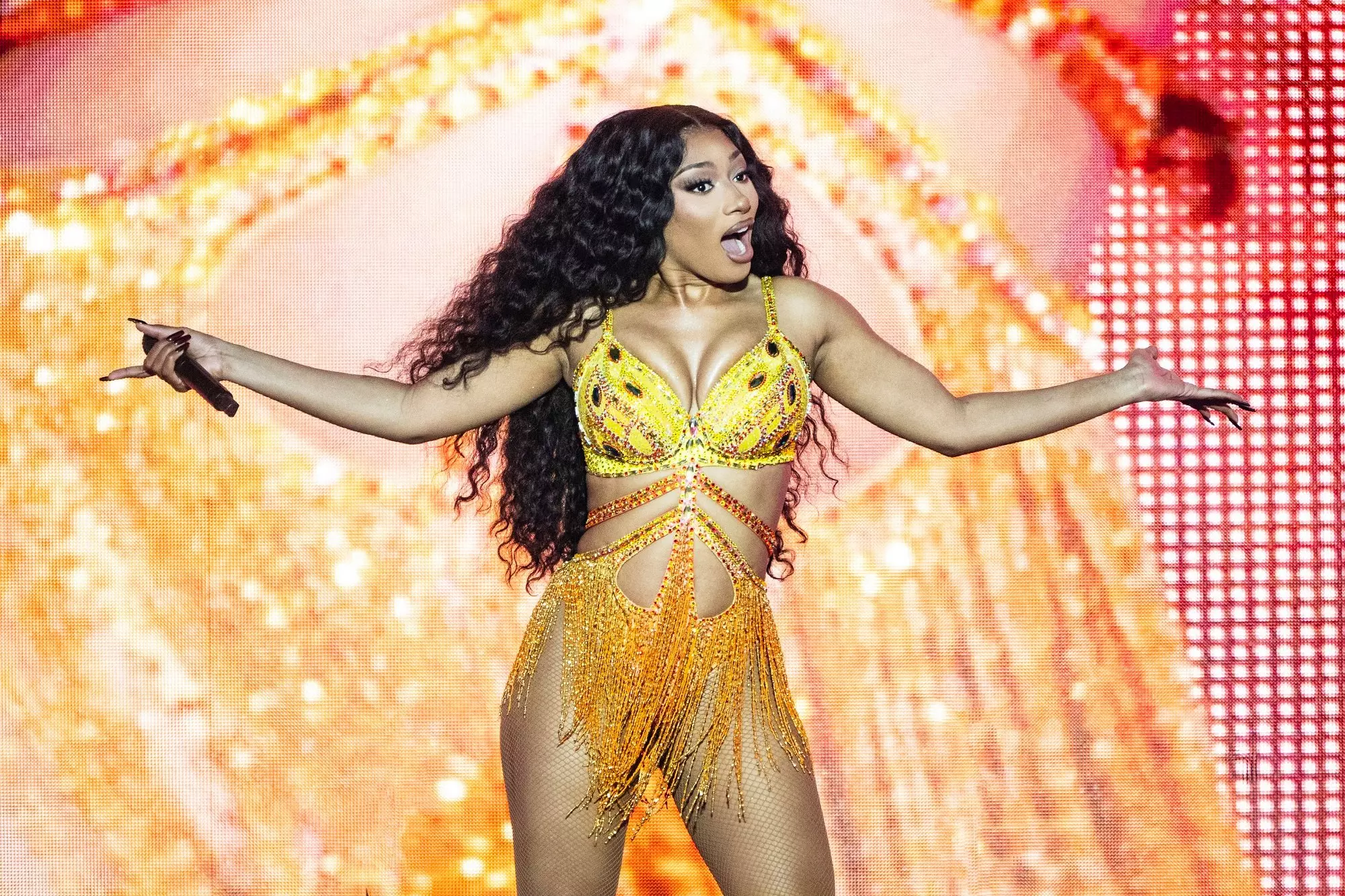
6 Takeaways From Megan Thee Stallion's 'Megan': Snakes, Shots & Self-Assurance
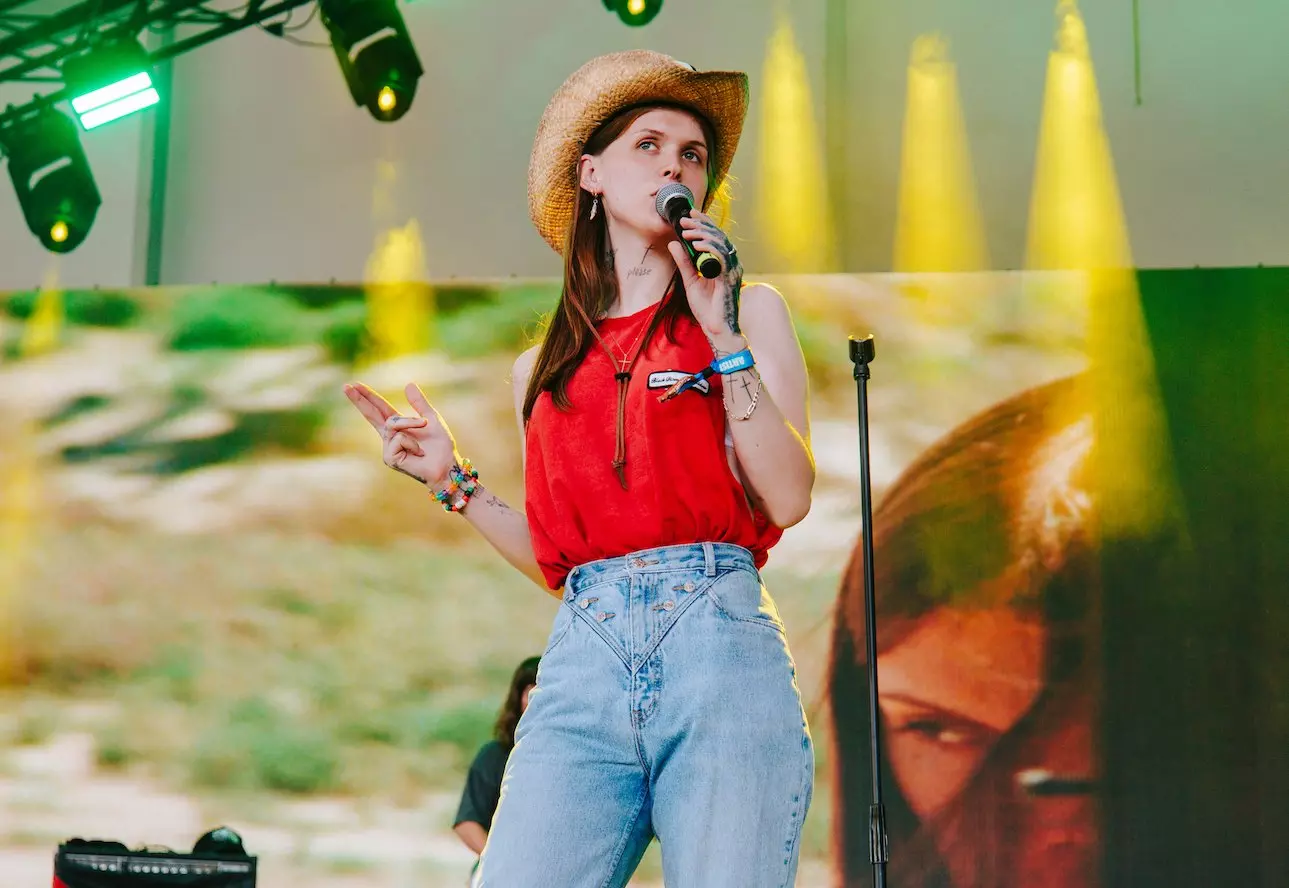
9 Epic Sets From Bonnaroo 2024: Ethel Cain, Melanie Martinez, Megan Thee Stallion & More
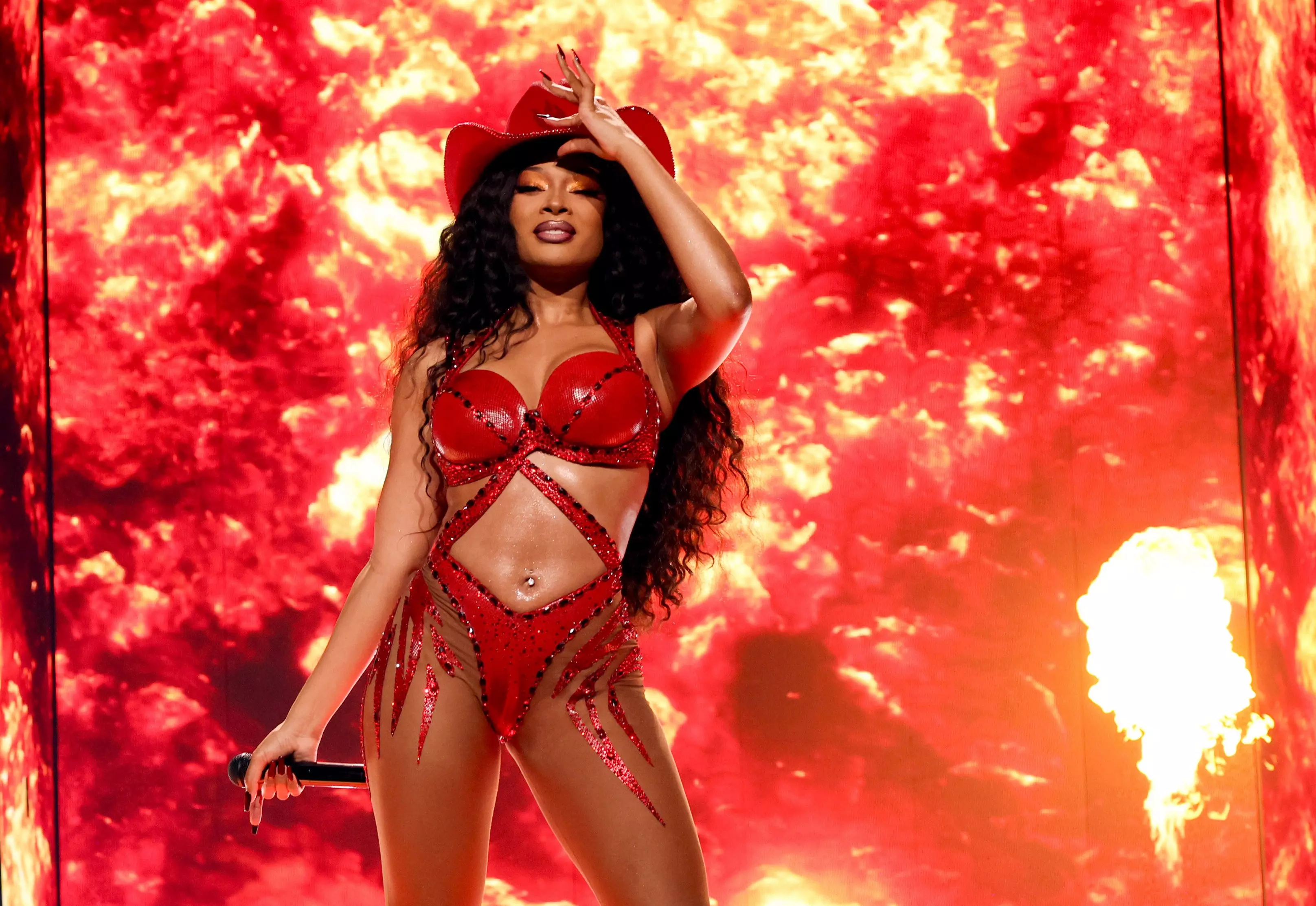
5 Iconic Moments From Megan Thee Stallion's Houston Hometown Shows

Everything We Know About Megan Thee Stallion's New Album 'Megan': Tracklist, Release Date & More
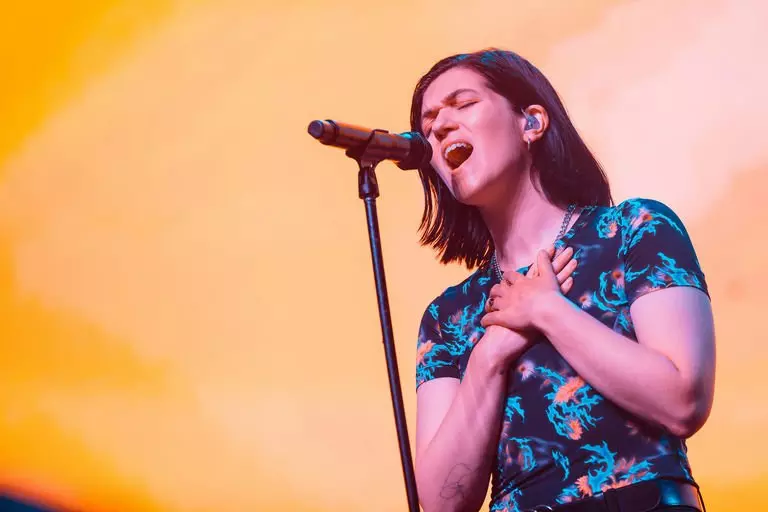
15 LGBTQIA+ Artists Performing At 2024 Summer Festivals
Inspiration Comes From Everywhere
The star and her collaborators incorporate unexpected musical influences on Megan via creative sampling. Megan Thee Stallion speeds up and flips Teena Marie's 1984 ballad "Out on a Limb" for "B.A.S." — a song she co-produced with her longtime ally LilJuMadeDaBeat. "BOA" is cleverly crafted from sounds in the first solo hit by Gwen Stefani, 2004’s "What You Waiting For?"
UGK are reunited from across the heavenly divide on the Juicy J-produced "Paper Together," with Bun B contributing new work and the late Pimp C joining in lyrical spirit. This is especially significant when considering that Juicy J produced "Intl’ Players Anthem (I Choose You)," UGK’s 2007 hit with Outkast. Juicy J also made the beats for Megan’s famous song "Hot Girl Summer."
That’s just the tip of the iceberg when it comes to samples waiting to be discovered on Megan. There are many more riffs and other musical notions that the sample bank in our brains have yet to detect.
Self-Love Is Queen
Whether she’s affirming, "I’m worthy, not worthless" on "Worthy," or literally touching herself in the auto-erotic "Down Stairs DJ" (which joins masturbation masterpieces like Divinyls’ "I Touch Myself" and Tweet’s "Oops"), Megan is grounded in songs that promote self-love as the best kind of love.
She does admit that this is sometimes a challenge to embody, as when she talks about lingering depression on "Moody Girl." But the album generally moves towards the light.
She Loves Japan
One of the big surprises on Megan is that she raps in two languages. She rhymes beautifully in Japanese on "Mamushi" with Yuki Chiba, a seasoned rapper from Japan who is influenced by the Southern swag. (Just take a look at the Memphis moves and Houston rhyme schemes of his viral song "Team Tomodachi.")
On "Otaku Hot Girl," she raps about the manga series "Naruto" and drops other anime references to show her love of Japanese pop culture.
Learn more: 10 Neo J-Pop Artists Breaking The Mold In 2024: Fujii Kaze, Kenshi Yonezu & Others
Megan's Game Is Tight
Megan is the first album to be released on Megan Thee Stallion’s own label. It follows her split from 1501 Certified Entertainment, a record label with which she was engaged in a protracted and ugly legal battle for earnings.
She now has the muscle of the major label Warner Brothers as a partner for her independent venture, Hot Girl Productions. She also recorded an Amazon Original song called "It’s Prime Day" for a commercial, as well as an exclusive Amazon edition of Megan.
It’s safe to say that this album represents a new level of business freedom and acumen for Megan Thee Stallion.
PRIDE & Black Music Month: Celebrating LGBTQIA+ & Black Voices
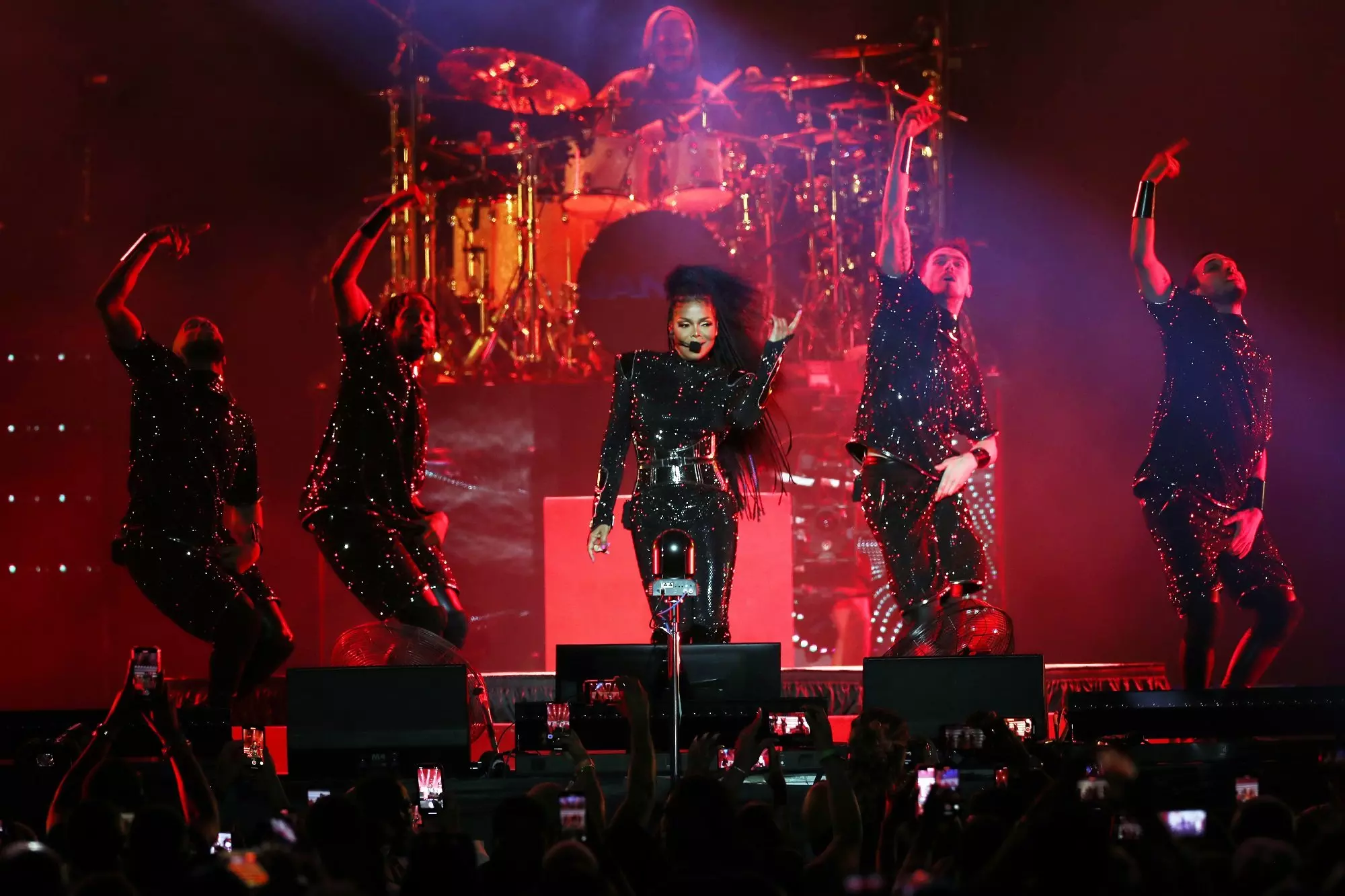
Celebrating 30 Years Of Essence Fest: How New Orleans & Multi-Generational, Diasporic Talent Create The "Super Bowl Of Culture"
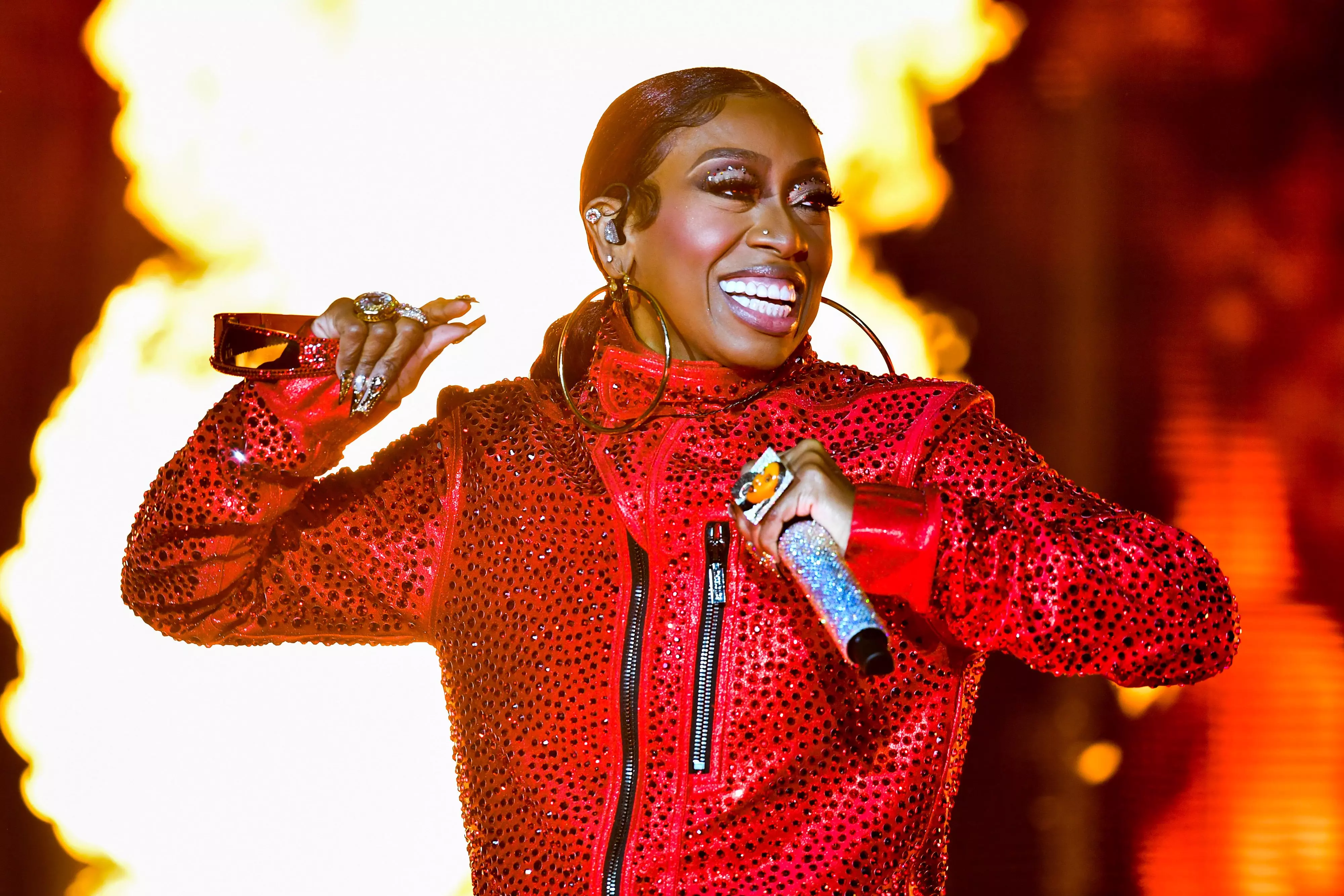
Celebrating Missy Elliott: How The Icon Changed The Sound, Look & Language Of Hip-Hop

Tekno Talks New Music, Touring America & His "Elden Ring" Obsession

5 LGBTQIA+ Record Labels To Check Out: Get Better Records, So Fierce! And Others
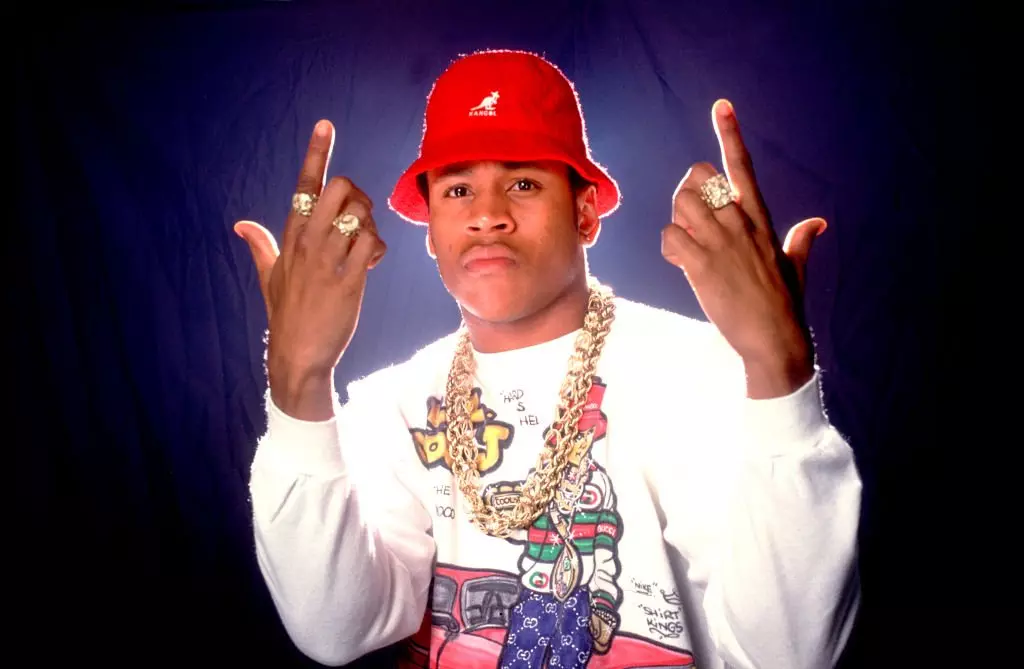
Celebrate 40 Years Of Def Jam With 15 Albums That Show Its Influence & Legacy

Photo: Ashley Osborn for Bonnaroo 2024
list
9 Epic Sets From Bonnaroo 2024: Ethel Cain, Melanie Martinez, Megan Thee Stallion & More
With an exciting mix of rising stars and big-name performers, Bonnaroo 2024 brought another year of showstopping performances to Manchester, Tennessee. Revisit some of the most intriguing sets from The Japanese House, Interpol and more.
The 2024 iteration of Tennessee's Bonnaroo Music & Arts Festival was an absolute scorcher — even without the 95-degree highs.
The weekend brought some of the hottest names in music for a stacked lineup of buzzy newcomers and hitmaking veterans. From the Red Hot Chili Peppers' spectacular return to touring with John Frusciante, to Dashboard Confessional's star-studded Emo Superjam, to Billy Strings joining Post Malone for "rockstar," to Chappel Roan singing to a wig, there was no shortage of unforgettable moments at The Farm.
While this year was the literally hottest that Bonnaroovians had seen in a few years, sweating through shirts (or lack thereof) proved completely worth it as some of the biggest iconoclasts came together and brought their all. It was electrifying, whimsical and at times emotional — and the bright, sunny skies served as the perfect backdrop for it all.
If anything, the blistering — and briefly thundery — weather was a testament to the enduring nature of music fans; folks from all over the globe will never miss a chance to watch their favorite artists. Relive the magic with nine of the most exciting sets from Bonnaroo 2024.
The Foxies Took Technical Mishaps In Stride
The Foxies | Yvonne Gougelet for Bonnaroo 2024
Nashville's premier glitterpunk exports the Foxies delivered a fun, crowd-pleasing set Thursday night on the Who stage, even despite a flurry of audio issues and technical hiccups. The Roo crowd was forgiving, though, and the band rewarded us with some of the best songs from their catalog — plus a cover of Sheryl Crow's "If It Makes You Happy."
"Summer Never Dies," "Timothee Chalamet," and "Little Monsters" all landed perfectly, but the group's personality shone brightest during their newest release, "Natural Disaster." It couldn't have been a more apt song for Bonnaroo's carefree setting — an ode to feeling free and accepting the wildest parts of yourself.
"A huge theme while we were writing ['Natural Disaster'], for me, was when I was 20 living in Brooklyn, how I was, all the cringey stuff that I did as a young adult," The Foxies frontwoman Julia Bullock told GRAMMY.com backstage. "I wish I wouldn't have shied away from it, or been embarrassed by it — I wish I'd leaned into the cringiness. This is an anthem for that: if I could do it all over again I would just embrace the fact that we are all just weird." Indeed we are, Julia.
The Japanese House Brought Love And Light
The Japanese House | Yvonne Gougelet for Bonnaroo 2024
Since its 2015 inception, The Japanese House has always been in the zeitgeist. Where Amber Bain's heavily layered, mournful music was inescapable during the pale-grunge Tumblr era, it now occupies a much lighter space. Coming off of a banner year and a critically acclaimed album, In the End it Always Does, Bain has been embracing her pop side like never before.
Her set was a cornucopia of new and old sounds, the most exciting part of which was her new song, "Smiley Face." Written a year ago when Bain met her current fiancée on a dating app, "Smiley Face" is bright, soft, and sploshy, fraught with the energy of someone falling deliriously in love. "[When we first met] she lived in Detroit and I lived in London, and I would stay awake until she fell asleep," Bain tells GRAMMY.com of the song. "We were in different time zones. I was running on nothing — I felt a bit high."
Like the rest of her discography, the song held the audience in the palm of its hand, this time enveloping us in a warm, flickering glow. "I could be losing my mind but something's happening," Bain sang, naturally, with a smile on her face.
TV Girl Delivered A Masterclass In Melodrama
"I have a bit of stage fright," revealed TV Girl singer Brad Petering before the group's second to last song. Even if he felt it, stage fright wasn't apparent during the indie pop band's hour-long performance. Their set felt like a dream; onlookers got lost in the moment, spinning, swaying and dancing in the refreshingly cool breeze.
It fell serendipitously near the 10th anniversary of their debut, French Exit, an album that launched them into the limelight as stalwarts of indie pop. Songs like "Louise" and "Lovers Rock" felt almost nostalgic 10 years on, and newer cuts like "99.5" and "The Nighttime" blended right in. Backed by a full band — including backup singers Kiera and Mnya, whose powerhouse vocals could've made for their own show — TV Girl turned already dynamic songs like "Birds Don't Sing" and "Not Allowed" into even fuller, radiant versions of themselves.
Ethel Cain Took Us To Church
Ethel Cain | Ashley Osborn for Bonnaroo 2024
Despite its small size, there was no more perfect space for an Ethel Cain set than the reserved, remote That Tent in the quiet corner of Bonnaroo. Her performance saw the quaint venue packed to the brim, 1000-odd people staring back at Cain in dumbstruck awe, as her band played through songs inspired by Christian music and Gregorian chant.
Beginning with unreleased song "Dust Bowl" and the haunting "A House in Nebraska," Cain's performance was an intense, resounding 40 minutes that traversed between peace and emotional turmoil, much like all of the songs from her breakthrough album, Preacher's Daughter. The euphoric response from her overflowing audience left little doubt that her songwriting can break down walls; she's a timeless act, and her Bonnaroo set proved it.
Neil Frances Set Themselves Apart
There are a number of artists with variations of the name Neil Frances — or at least that's what it looked like from this year's Bonnaroo bill. One difference in letters, and you may have found yourself at the Other Stage at 6:15pm on Saturday, seeing Neil Frances instead of Neal Francis. But, whether you've been a fan of Neil Frances for years, or you wound up there by mistake, the indie-dance duo would not have let you leave disappointed.
Backed by a live full band, their set felt like a psychedelic ode to the club, to dancing, and to feeling free. And their live production is every bit an artistic endeavor as is being in the studio.
"We've always preferred to play with a live band; there are so many things that we do live that are completely different from the record," the duo's Marc Gilfry told GRAMMY.com. "It's fun, it's dramatic, and we have really great musicians."
Read More: NEIL FRANCES Just Want To Have Fun & Get 'Fuzzy'
Melanie Martinez Gave Us A Peek Inside Her Mind
Melanie Martinez | Dusana Risovic for Bonnaroo 2024
Adorned with bows, horns, over-the-top dresses, and a multi-eyed, alien-like prosthetic mask, Melanie Martinez was dressed exactly how you'd think she would. With a stage setup of greenery, giant mushrooms, nymphs, and various mythical elements that seemed to revel in its own kitchiness, the details of Martinez's intricately-woven performance art unfolded around the audience, song by song, immersing everyone in a world of weird, elaborate fun.
Her dancers wove through a delicately choreographed, three-act narrative, taking the crowd through her three albums in chronological order, telling the story of the Cry Baby character, who first appears in her debut album, Cry Baby. The character transforms from baby to child to young adult, and finally, to a fully grown, pink-skinned being in the third act. Martinez's set was artistry in every sense of the word, taking fans through the ups and downs of youth and coming-of-age through rich metaphor and lyrical imagery — and prompting delighted sing-alongs as a result.
Interpol Were A Quiet Gem
Interpol | Ismael Quintanilla III for Bonnaroo 2024
More than 25 years into their career, there's still something very disarming about Interpol. Maybe it's their effortless, NYC cool, or that they still know how to build the type of tension that gives you chills. Or maybe it's that they're men of very few onstage words — and when they do speak, you feel as though you've been given a gift.
Three things can be true, and they were for Interpol's Bonnaroo set Friday Night. Not ones to waste time talking, the three-piece rock band played an unbelievably tight 75-minute set, mostly sticking to a reliable selection of early hits, largely from their 2004 album, Antics. The crowd didn't seem put-off by the lack of chatter, as everybody had some singing along to do — because it was impossible not to.
Milky Chance Never Stopped Dancing
Milky Chance | Douglas Mason for Bonnaroo 2024
Milky Chance wants you to dance. The German duo-turned-quad may have steadily transformed since their early folk days, but they've never abandoned their ability to make every beat danceable and each chorus undeniable. And on stage, they were having a ball.
With a set that included both 2012 hit "Stolen Dance" and their latest, "Naked and Alive,'' their evolution from folk renegades to breezier, disco-pop pundits is on full display — and we're glad they brought us all along for the ride.
Speaking to GRAMMY.com backstage, bassist Philipp Dausch discussed their journey: "It was quite a process to become the band we wanted to be. Our music has always been in-between electronic and folky, so we put a lot of work into becoming that band on stage as well. We love rhythms and beats. We like when music moves you."
Megan Thee Stallion Declared This A "Self-Love Summer"
Megan Thee Stallion | Pooneh Ghana for Bonnaroo 2024
No one is doing it like Meg. A highlight of day four — and perhaps the entire weekend — was Megan Thee Stallion's riotous, yet charming Sunday night set. Clad in a yellow-ombre bodysuit and welcomed by a crowd chanting her name, the Houston hottie commanded the What stage in a manner that suggested it won't be too long until she's in the headlining slot.
"Real hot girl s—," she screamed at the crowd, who didn't hesitate to scream back. It was clear she was on a high; not only was it her first Bonnaroo set, but it also followed back-to-back sold-out shows in her hometown of Houston, making it an absolutely monumental weekend for the rapper.
Her and her dancers shook, twerked, and rolled through each hit without ever losing breath control — even during what she deemed the "personal section" of her set. And that portion was aptly-named; beneath the ass-shaking and thumping beats, "Cobra" brought about an air of sadness during an otherwise infectiously playful and positive performance.
The lyrics chronicle her mental health struggles over the years amidst personal traumas and virulent online abuse. "Man, I miss my parents," she sang of her late parents, on what happened to be Father's Day. But shortly after the poignant moment, Megan quickly returned to her signature body-moving, sex-positve calling cards, "WAP," "Savage," and "Body," during which she declared this summer a "Self-Love Summer." That's some Real Hot Girl S— we can get behind.
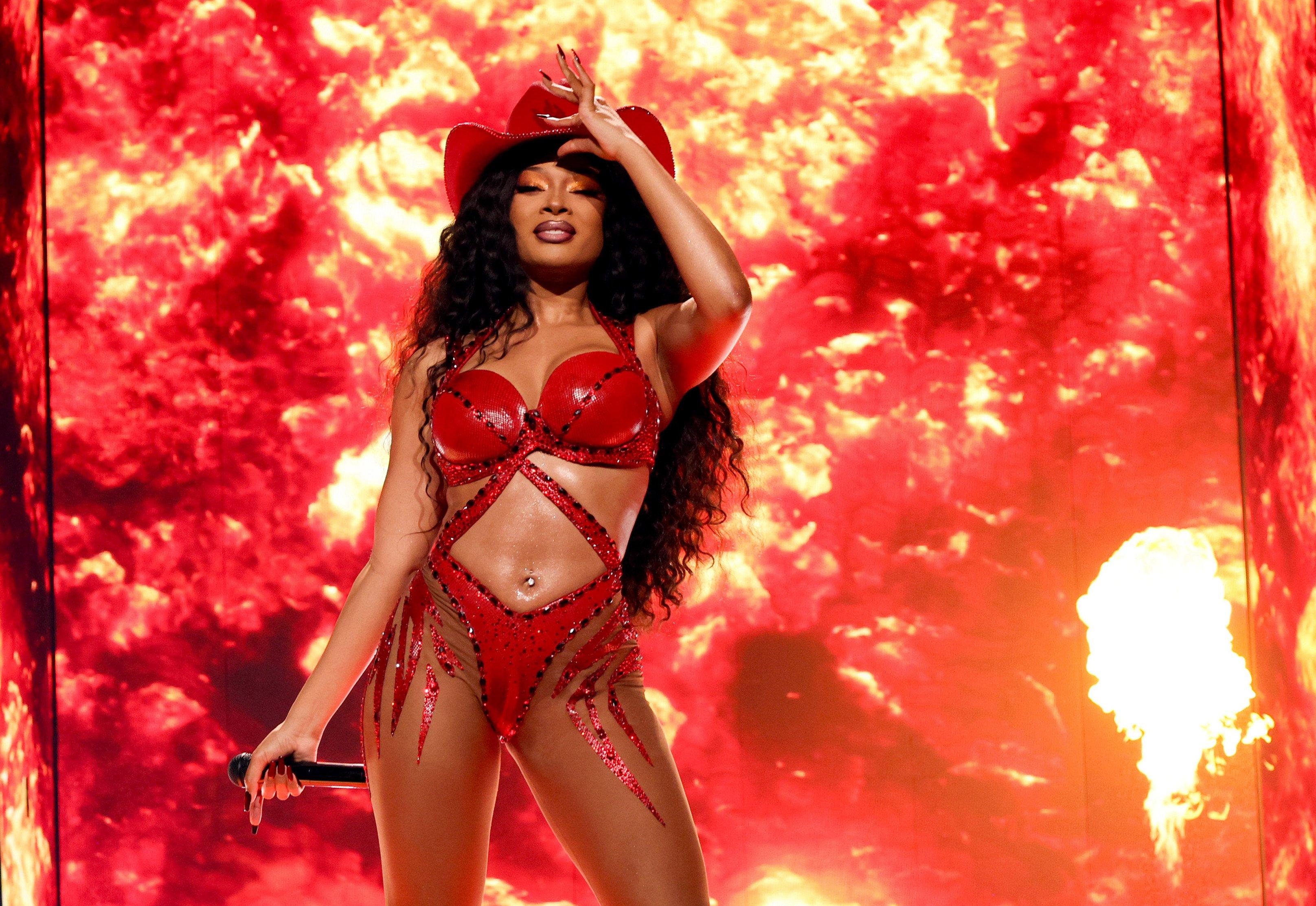
Photo: Kevin Mazur/Getty Images for Live Nation
list
5 Iconic Moments From Megan Thee Stallion's Houston Hometown Shows
Megan Thee Stallion returned to Houston on June 14 and 15 for an epic homecoming filled with surprise guests, gifts and plenty of twerking. Revisit five of the most exciting moments from the Houston stops on the rapper's Hot Girl Summer Tour.
Seven years into her career, Megan Thee Stallion is no stranger to a sold-out crowd. The rapper has been dubbed "Sold-out Stalli" since selling out nearly 20 shows on her Hot Girl Summer Tour — and though her stops at Houston's Toyota Center weren't the first sellouts on the trek, they were considerably the most meaningful ones.
"I'm so happy to be home," Megan, a lifelong Houstonian, told the crowd on June 14, night one of the back-to-back shows. After honing her rap skills and launching her career in H-Town, the star expressed her gratitude for the support her Houston fans have shown her from the start.
"Hotties, y'all know what we've been through, y'all been rocking with me since day motherf—in' one," she gushed on night one. "I love y'all, I appreciate y'all, I respect y'all and I'm very grateful for y'all because, without the Hotties, there would be no motherf—in' Hot Girl Coach."
The two-night stint highlighted Megan's vulnerability, drive and exceptional showmanship. But above all else, her hometown shows reminded fans that she's just a strong-kneed, animé-loving girl from Houston.
Below, check out five of the most memorable moments from Megan Thee Stallion's Houston homecoming.
She Organized A Hottie Egg Hunt
Before stepping on stage on June 14, Megan sent Houston fans on a Hottie Egg Hunt for a chance to win merchandise and tickets to the show that night. The three-part interactive adventure featured clues, documented on Instagram and X, that helped fans locate the golden eggs.
The first clue reads, "A wild stallion can't be tamed…meet me at the place where I'm gonna rock the stage!" The second, "Where I run through the mall with your daddy." The last, "People are smart, my Hotties are smarter, find this egg where I got one degree hotter."
Eager fans scoured the whole city and eventually found the eggs at Megan’s favorite spots in Houston: Toyota Center, The Galleria and Texas Southern University. So far, Houston has been the only city Megan has done this for, making for another special moment between her and Houston hotties.
She Continued To Prove She's A Girls Girl
An unfortunate rap show trend has seen several female opening acts receive hate ahead of male headliners. Luckily this hasn't been the case for Memphis rapper GloRilla, who has noticeably been enjoying her experience as an opener on the Hot Girl Summer Tour.
On night two in Houston, GloRilla presented Megan with a blown-up art piece commemorating her upcoming album, Megan, on stage. In return, Megan complimented the 24-year-old rapper, saying, "Glo is one of the realest women I've ever met."
That evening, Megan showed her love for another rising star — and fellow Houston female rapper — Monaleo. The Mo City rapper sent the crowd into a frenzy as she sang her 2023 hit song "Beating Down Yo Block," which samples the classic "Knocking Pictures Off Da Wall" by Houston's Yungstar.
She Paid Homage To Houston Legends
Monaleo was far from the only Houston native to take the stage with Megan during her hometown visit. On night one, Megan surprised fans with a legendary performance from a few Houston all-stars. The room filled with excited screams as H-Town''s Bun B popped out to perform UGK's "Int'l. Players Anthem (I Choose You)." As if it couldn't get more iconic, Megan joined the legend on stage to rap Pimp C's verse of the song.
The night also featured a legendary performance of "Southside" by Lil Keke, which Megan teased prior in the show with her "Southside Royalty Freestyle." Fans also got to enjoy Slim Thug's verse from "Still Tippin," a song he shares with Mike Jones and Paul Wall. (Wall also performed the song on Megan's tour the previous night at Austin's Moody Center.)
On night two, Megan brought out another Houston great, Z-Ro to rap a classic, "Mo City Don." Though a Hot Girl at heart, Megan couldn't help but celebrate the legendary men who paved the way and left a historic mark in Houston's dynamic hip-hop scene.
She Showed — And Received — Hometown Love
As Megan arrived at the Toyota Center on June 14, she received a surprise welcome by students from her alma mater, the Pearland High School Band and Prancers — a heartwarming kickoff to a night of mutual love between Megan and Houston that put her in high-spirits before the show.
Both nights were filled with an immense amount of energy and support, from Megan signing autographs throughout the show to making sure she got the perfect selfie with her beloved supporters. Even during more tender moments — like “Cobra," a song about suicide and her depression — felt particularly moving because of the interaction between Megan and her hometown fans.
She Put The "Hot" In Hottie
Taking notes from another H-Town hero and fellow Houstonian, Megan put on an impressive show reminiscent of Beyoncé, from jaw-dropping choreography to stunning wind-blown poses. Megan also tapped into her past life as a Prairie View A&M Panther Doll with majorette-inspired dancing during her song "Cognac Queen."
Of course, she wouldn't be Thee Stallion if she didn't show off her twerking skills and famously powerful knees during her two-hour show run. Fans even got to participate in the twerk-fest during intermission, as a "Hottie Cam" panned through the audience, showing love to the girls and boys.
If her hometown shows were any indication, Megan Thee Stallion's future is not just bright — it's smoking hot as well.
